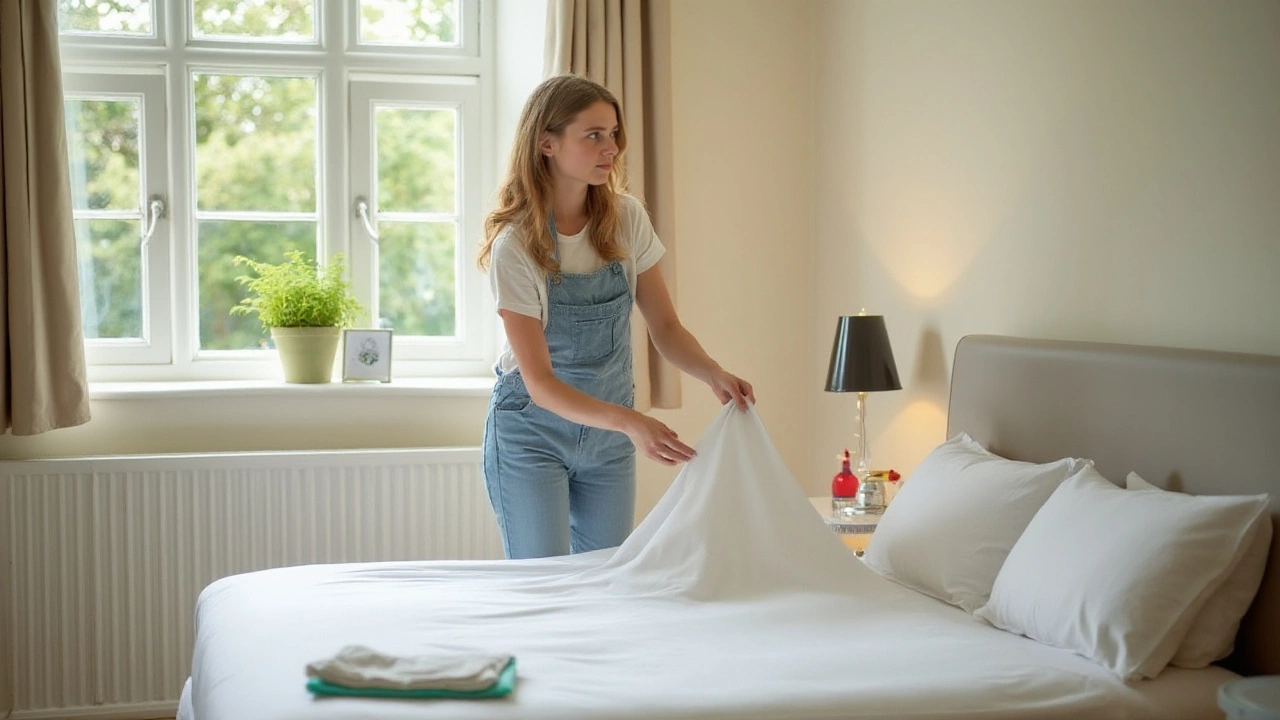Mattress Maintenance: Simple Steps for a Fresh Bed
We all spend a third of our lives in bed, so a clean mattress matters. Too many people think a quick vacuum is enough, but there’s more you can do to keep your mattress smelling great and lasting longer.
Fight Odors Fast
If you’ve ever dealt with urine or pet accidents, the first thing to do is blot the wet spot. Don’t rub – that just spreads the mess. Then sprinkle a generous layer of baking soda and let it sit for at least 30 minutes. Baking soda absorbs moisture, but it won’t eliminate the smell on its own. For stubborn urine smells, mix one part hydrogen peroxide (3%) with a few drops of dish soap and a tablespoon of baking soda. Spray the solution lightly, let it bubble, then wipe with a clean cloth. The peroxide breaks down the odor molecules, while the baking soda finishes the job.
Enzymatic cleaners are another solid option. They contain proteins that eat away at urine proteins, fully neutralising the smell. Follow the label – usually you spray, wait, then blot. If the odor returns after a few days, repeat the process or call a professional.
Keep Stains at Bay
Spills happen. The trick is to act quickly. For blood, wine, or food stains, dab with cold water and a little mild dish soap. Avoid hot water – it can set the stain. For oil‑based spots, sprinkle cornstarch or talc, let it absorb for 15 minutes, then vacuum. After any cleaning, let the mattress air dry completely before putting the sheets back on. This prevents mildew and keeps the fabric from getting musty.
Regular vacuuming removes dust mites, dead skin, and allergens. Use the upholstery attachment and move in slow, overlapping strokes. If you have a vacuum with a HEPA filter, you’ll capture the tiniest particles, which is especially helpful for allergy sufferers.
Seasonal Deep Clean
Every few months, give your mattress a deeper treatment. Strip the bed, vacuum the surface, then flip or rotate the mattress to even out wear. Apply a light mist of a water‑based disinfectant spray (look for one labelled safe for fabrics) and let it dry in a well‑ventilated room. You can also protect the mattress with a washable cover; wash the cover monthly to keep the whole bed fresh.
When you’re moving out, end‑of‑tenancy cleaning often includes mattress cleaning. Landlords expect a no‑odor, no‑stain bed. A professional service can steam‑clean the mattress, reaching deep into the foam where home methods struggle. If you prefer DIY, the steps above usually satisfy most landlords.
When to Call a Pro
If the mattress is older than five years, has persistent odors despite multiple treatments, or shows signs of mold, it’s time to get a pro involved. Professionals have industrial‑strength steam cleaners and ozone generators that can revive a mattress without damage. They also know how to assess whether a mattress is still safe to use or needs replacement.
In short, a good mattress maintenance routine is quick, cheap, and effective. Vacuum weekly, spot‑clean spills immediately, use baking soda or enzymatic cleaners for smells, and do a deep clean every few months. Follow these steps and you’ll enjoy a fresher, healthier bed without breaking the bank.

Essential Hacks for Quick and Efficient Mattress Cleaning
Mattress cleaning often falls off the priority list, despite its importance for hygiene and longevity. This guide delves into simple and effective hacks to clean and maintain your mattress. Discover easy stain removal techniques, deodorizing tips, and routine cleaning strategies that keep your mattress fresh. Whether dealing with accidental spills or regular upkeep, these insights ensure your mattress remains a cozy and clean haven.
Read More